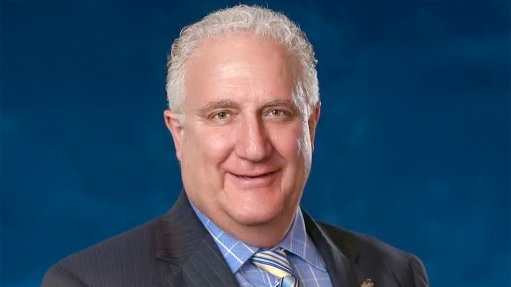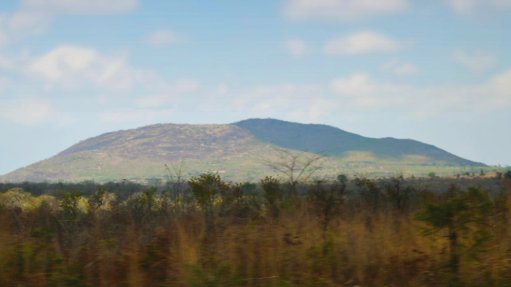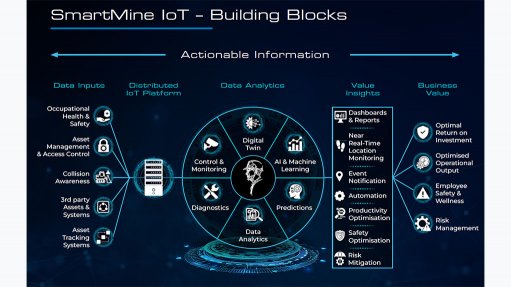Green finance and green premiums: We ain’t seen nothing yet
This article has been supplied.
By: Richard Roberts - Editorial Director, Beacon Events
If mining is getting more complex the intricacies of financing strategically important mineral projects are currently off the charts, IMARC 2024 heard. The next 12 months shape as a fascinating next phase on this front.
“Managing market failure is incredibly tricky from a financing perspective,” might have been the understatement of this year’s event from Critical Minerals Association Australia director Olimpia Pilch.
Nods and sighs in one of many packed event auditoriums that addressed the hot critical minerals financing topic highlighted the dearth of readily available solutions.
Geopolitics, technologies, demand and price signals are all rapidly and individually shifting markets and collectively moving them at a rate that, not surprisingly, has many equity investors watching from the sidelines. That’s a big problem for $100 million companies trying to get $1 billion, multi-decadal projects off the ground, a scenario not uncommon in jurisdictions such as Australia.
Even with unprecedented government and public agency funding options on the table.
“We’re working really hard on trying to de-risk the funding by first accessing as much of that government support as possible,” said CEO of Australian Strategic Materials, Rowena Smith.
“But ultimately the equity piece does have to be met and we do need private funding to step in.
“Until that happens these projects will not get into production.”
More broadly it is juniors predominantly carrying the proverbial weight of the world on their shoulders as the sector sitting on most of the decent lithium, rare earths, cobalt, nickel, manganese, graphite, vanadium and other strategic mineral assets in project pipelines.
David Whittle, resource engineering adjunct professor at Monash University, says what generally distinguishes a critical mineral from an “ordinary” mineral – generally the ones powering the profits of the world’s big miners – is “one or more significant market flaws”.
“A common flaw is too much market concentration, for example the dominance of China as a buyer or seller. There are other flaws, such as high barriers to entry, poor availability of market information, heterogenous products and the market impacts of co-production,” he says.
“New substitutes are emerging for many critical minerals, leading to the potential for disruptive falls in demand.
“No wonder it can be challenging to finance critical minerals projects.
“Major mining companies might have the financial strength to push through these challenges, but most critical minerals markets are currently too small to be of interest to them.”
Hence, “it’s down to the little companies to save the world”. The challenge now, more than ever, is access to risk capital.
“Last year in total, according to our statistics, US$5 billion was mobilised by junior and mid-tier mining companies globally. That’s debt and equity combined. That’s a rounding error of the capital that’s actually really required,” said Bert Koth, mining fund partner at Denham Capital.
“It's next to nothing.”
Koth, a veteran in the space, said equity investors in smaller companies faced a raft of new issues with previously unfashionable commodities, but also many recurring concerns. There would be junior mining companies failing in development and exploration, as always, because of capital deficiencies, he said. Good assets stewarded by good management teams would continue to draw funding.
“But there's a lot of management teams out there running mining companies who, in reality, shouldn't be running them. That's part of the problem,” Koth said.
“And there are a lot of assets out there that are, frankly speaking, not good.”
A scarcity of quality projects was a recurring theme at IMARC 2024.
What isn’t lacking, according to experienced industry heads, are funding instruments being put in front of proponents of the projects that are available.
“There’s just a tremendous amount of money available from non-traditional stakeholders,” said Pacific Road Capital managing director Matt Fifield.
“It’s a huge change.
“In my career I've not seen the amount of policy driven money available for an old industry.”
John Dorian, investment manager at Orion Resource Partners, said: “There is an enormous amount of activity with strategics and governments around the world trying to secure supply chains, led by the US. For the junior and the mid-cap space where financing is often more of a focus there is hopefully a great opportunity there.
“I think to date it’s been more of a senior debt and more of a stick sort of approach. The stick being somewhat blunt. Our hope as a financier … is that progresses to the next stage of support. That could be pretty exciting for juniors and mid-caps in developing jurisdictions; being able to tap that support in the various forms that I think it’s evolving into.”
Pala Investments portfolio manager Tom Solomon expanded on that.
“The first phase was debt plus a blunt geopolitical stick. I think the next phase will be more focused on equity, on price support, on cost-effective solutions such as credit guarantees or involvement in financing to help de-risk geopolitics.
“And I think some of those can be very cost effective if you think about credit guarantees [because] potentially the government backing it doesn't have to shell out a dollar but it may help bring in private finance.
“Something we would certainly like to see more is private-public partnership. As a private equity investor we have value to add. Obviously the equity capital markets have value to add. Senior debt has value to add. And so thinking more smartly about how sovereign strategics can facilitate that value chain, I think, is hopefully the stage two, which is really what’s required.
“The senior debt driven blunt-stick approach is probably reaching its natural limits.”
Sam Riggall, CEO of Robert Friedland-backed nickel, cobalt and scandium developer Sunrise Energy Metals, said a diversified portfolio of funding partners would become de rigueur for smaller critical minerals companies.
“You can’t stick with one development model and one development partner because the politics is changing too rapidly,” the former Rio Tinto and Ivanhoe Mines executive said.
“In my career on the projects I've worked on we brought a lot of Western capital in in the early days on some of those earlier projects. The next round of investment came from large pools of Chinese capital. We're now seeing that the politics makes working for China quite difficult.
“So we're having to now look at the next buckets of money for big projects and that might be the Middle East, it might be Southeast Asia ... Governments are playing an important role trying to facilitate these into production.
“What I have seen as a large change is the influence of government funding agencies, particularly debt funding agencies, to play a role here and to play a role in partnership with commercial banks to get things financed. That all works very well but there's only so much credit risk or tolerance that the debt providers are prepared to wear on any project so the balance is always then left to equity.
“Where is the equity going to come from to fill the gaps? If it's not coming from customers who typically don't want to invest very far upstream, can you get the markets or strategic investors to invest? That's really been the focus of where we've been as a battery materials project in the last few years.
“It's challenging because there's a lot of uncertainty around these markets. Customers have different views on the trajectory of where these materials are going to be needed and how much is going to be needed.
“And to be frank, at the moment, China is supplying everything everyone needs and so there isn't a great sense of urgency by customers at least to find solutions or alternative metal supply.”
Nor is there real urgency, at this stage, to incentivise “doing the right thing” while developing and producing energy transition materials.
“If you want to have an offtake agreement with an OEM, if you want to get financing from governments, if you want to access most of the finance in London or Canada, you have to be able to demonstrate that you are doing the right thing,” said Pilch.
“But OEMs are not willing to pay green premiums on critical minerals when they themselves are competing with China and need to pay as little as possible so that the cost of battery packs can go down, the cost of EVs can go down, and they can flog as many EVs as possible to Western markets.
“I know that a lot of nickel miners and a lot of lithium miners have been calling for green premiums to be able to compete with China to be able to sustain their operations.
“But it's very unlikely to happen in battery metals ... Unfortunately it is a bit of a race at the bottom. Whoever can produce these minerals the cheapest is ultimately going to be a winner.
“If you’re asking OEMs to pay more you have to be able to demonstrate security of supply and superior quality products. Where we are seeing it is where, for example, companies are looking for semi-conductor materials or for rare earths which are absolutely crucial and highly dominated by China.
“That is where the security of supply equates to a premium because OEMs have already experienced what happens if you don’t secure a supply chain.”
Solomon said he expected to see far greater urgency around strategic metal supply chain security in the short term and that exigence should translate into higher pricing, if not levels of transparency.
“I think that's where we are going to see capital be really sort of thrown in,” he said.
“Being based in Europe ... I was at a panel yesterday which had a few European countries saying they are putting money to work.
“I can safely say they are not.
“The US I think is leading the charge.
“I see this more as a DoD [Department of Defense] rather than a DoE [Department of Energy] drive.”
Luke Smith, senior portfolio manager at the circa-A$350 billion AustralianSuper fund manager, is one who expects contract pricing to figure more prominently in critical minerals financing deals to get larger equity funding wheels turning.
“For better or for worse pricing signals are what is required,” he said.
“We are a long-term patient investor. Most equity out there doesn't look beyond the [current] cycle and that is part of the issue that we are facing at the moment in projects.
“I think back to the iron ore industry when it first started in Australia. There wasn't any spot market. It was all about hitting on long-term agreements, long-term contracts with mid and downstream players with prices included in that.
“I think that's what we really need to see now. We need those pricing signals and probably price guarantees in some respect locked into offtakes and that will then incentivise the investment.
“We are hearing and seeing … there’s definitely funding on the debt side. There’s various government incentives in play.
“But we need that equity piece.”
Article Enquiry
Email Article
Save Article
Feedback
To advertise email advertising@creamermedia.co.za or click here
Press Office
Announcements
What's On
Subscribe to improve your user experience...
Option 1 (equivalent of R125 a month):
Receive a weekly copy of Creamer Media's Engineering News & Mining Weekly magazine
(print copy for those in South Africa and e-magazine for those outside of South Africa)
Receive daily email newsletters
Access to full search results
Access archive of magazine back copies
Access to Projects in Progress
Access to ONE Research Report of your choice in PDF format
Option 2 (equivalent of R375 a month):
All benefits from Option 1
PLUS
Access to Creamer Media's Research Channel Africa for ALL Research Reports, in PDF format, on various industrial and mining sectors
including Electricity; Water; Energy Transition; Hydrogen; Roads, Rail and Ports; Coal; Gold; Platinum; Battery Metals; etc.
Already a subscriber?
Forgotten your password?
Receive weekly copy of Creamer Media's Engineering News & Mining Weekly magazine (print copy for those in South Africa and e-magazine for those outside of South Africa)
➕
Recieve daily email newsletters
➕
Access to full search results
➕
Access archive of magazine back copies
➕
Access to Projects in Progress
➕
Access to ONE Research Report of your choice in PDF format
RESEARCH CHANNEL AFRICA
R4500 (equivalent of R375 a month)
SUBSCRIBEAll benefits from Option 1
➕
Access to Creamer Media's Research Channel Africa for ALL Research Reports on various industrial and mining sectors, in PDF format, including on:
Electricity
➕
Water
➕
Energy Transition
➕
Hydrogen
➕
Roads, Rail and Ports
➕
Coal
➕
Gold
➕
Platinum
➕
Battery Metals
➕
etc.
Receive all benefits from Option 1 or Option 2 delivered to numerous people at your company
➕
Multiple User names and Passwords for simultaneous log-ins
➕
Intranet integration access to all in your organisation

















